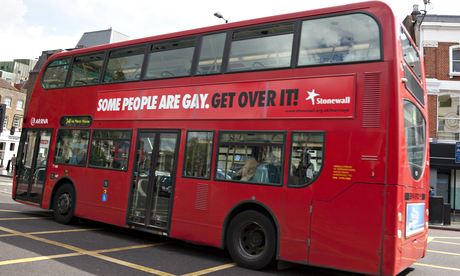
The average age at which a young LGBT person "comes out" is now seventeen, so many will still be at school or college and may well seek out a trusted member of staff for advice. So how should book group leaders approach it?
Back when I used to be a teacher, I was involved in a project in which books were used to help create safe spaces for young LGBT people.
Fiction can be vital bridging tool between a teacher and a pupil, a buffer to discuss a variety of issues on neutral ground but here I present a few tips for using LGBT friendly texts in the classroom or library.
The environment
Before you can hope to meaningfully discuss LGBT issues you need to ensure the classroom or library is truly a safe physical space. The easiest thing in the world to do is to subtly display a rainbow Pride symbol. At my primary school we put one in the reception office hatch to signal that LGBT families were welcome in our school. You can stick one in the corner of an interactive whiteboard, in a window or on your classroom computer to show you are an ally to LGBT people.
It's even more vital that use of homophobic language is shown zero tolerance. How can a meaningful lesson happen with sniggering on the back row? Stonewall's classroom packs are a must in dealing with homophobic language. Even better… get a Stonewall Schools Role Model – like me – to come to your school and do it for you!
Younger children
Children are never too young to understand that families come in all different shapes and sizes. All primary classes are diverse and so should your teaching be. Primary age children should be presented with diverse characters in picture books – in terms of race, physical ability and sexual orientation.
There are some great books out there. And Tango Makes Three by Justin Richardson and Peter Parnell is a must. All young children can sympathise with penguin Roy and penguin Silo's anguish to hatch an egg of their own. Similarly, Todd Parr's The Family Book is as inclusive as it gets. Less explicitly, books like Something Else by Kathryn Cave and Chris Riddell or Giraffes Can't Dance by Giles Andreae are a great way of looking at difference and individuality and can be a valuable starting point for discussions about sexuality.
Older primary school aged children
I used to use The Harvey Milk Story by Kari Krakow with my Year 5 class. The injustice of Milk's short life is not lost on them and opened a conversation on famous LGBT role models such as Tom Daley. The goal is to encourage pupils who may be starting to use "gay" negatively to see it as a positive thing.
For older primary age children, Percy Jackson has a bi friend in the form of Nico di Angelo while Pretty Little Liar Emily Fields is also bi in the bestselling series of the same name. Finally, JK Rowling has said Dumbledore was gay…
Secondary school age
If reading Malorie Blackman's Noughts & Crosses or perennial To Kill A Mockingbird it is be easy to muse on the discrimination of LGBT people as well as racism.
There are also gay couples in Patrick Ness's Chaos Walking trilogy (Ben and Cillian), and in all of my or David Levithan's novels. Perhaps the most famous same-sex YA pairing is Magnus and Alec in the bestselling Mortal Instruments series.
An interesting topic of conversation would be to compare books that are about sexuality to books that just happen to feature LGBT characters. Cat Clarke's Undone, for instance, looks at the devastating consequences of homophobic bullying while my own Cruel Summer is a thriller that just happens to have a gay lead. It's important that a variety of LGBT characters are presented – not always gay, white men and certainly not only texts which suggest being LGBT is something to suffer through or be ashamed of.
When discussing LGBT characters, examine how they aren't defined by their sexuality and explore their character traits beyond this. Avoid books which do not define characters beyond simply being the "gay best friend".
Representation
Perhaps more important than discussing LBGT characters is just making sure they are represented. Five per cent of a school population is likely to be "not straight/cisgendered" so these young people deserve to see themselves in posters, educational materials and, of course, in books.
Be confident in approaching LGBT issues, the law is on your side and parents or governors can't prevent discussions about them. Again, a great starting point would be applying for Stonewall's schools materials.
This article is part of the Guardian children's books site's LGBT themed week. If you want to discuss LGBT books further join us for a live Twitter chat with author Patrick Ness and special guests James Dawson (author of this article!), Liz Kessler and Alan Gibbons @GdnChildrensBks on #GdnAskNess from 6-7pm 14 May 2014.

